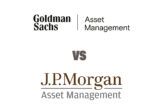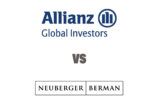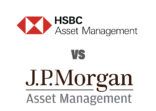A total of 239 mutual funds available for sale in Hong Kong and/or Singapore have Ping An Insurance in their top ten holdings, according to FE Analytics.
Of the total, 143 funds have more than 3% portfolio exposure to the company.
The stock is also included in several widely-tracked indices.
Iris Tan, Shenzhen-based senior stock analyst at Morningstar, said investors should be mindful of the rigorous changes in the onshore financial regulatory environment, which may have a material impact on Ping An and the rest of industry.
Recently, authorities have curbed ultra-short-dated insurance products to help reduce systemic financial risk. Moreover, Ping An holds assets in renminbi-denominated bonds, which have had a higher default rate in 2018 compared to the same period last year.
In the medium term, as China opens up its domestic industry, such as recent moves to allow 100% foreign ownership of domestic firms, foreign competition is a potential threat to Ping An.
But Tan said foreign insurers have not been attractive to the locals. Collectively, foreign companies hold a small market share. On the mainland, when people seek insurance services, they prefer traditional large companies with a familiar brand, she added.
Falling share price
Volatility in China and Hong Kong stock markets have brought Ping An’s stock price (H-shares) down 10.7% year-to-date, FE data shows.
But Tan is not concerned about short-term stock price fluctuations.
“The downturn in stock price did not happen only to Ping An, but also to other financial institutions in China under overall tighter scrutiny of the domestic financial sector,” she said. The sector is also under pressure as the US and China trade conflict continues.
Tan believes the current trading price is a discount that presents an attractive entry point for long-term investors. The H-share is trading HK$73.9 (as of 24 July), still representing a 20% discount to Tan’s estimated valuation in mid-May.
The insurer has been a consistent outperformer against the Hang Seng Index in US dollar terms. On a three-year basis, Ping An’s H-share stock price is up 55.3%, compared to the index (23.05%).
Online advantage
Tan said that despite 2018 performance, Ping An is a dominant player in China’s nascent insurance industry and has strong growth potential.
Domestically, Ping An’s rivals are state-owned companies New China Life and China Life, she noted. But a competitive advantage is providing online services.
“Internet finance is thriving in China while Ping An has proven its ability to tap into the online client base. Because of a reliable sales force and sustainable online channels, Ping An will continue to outperform peers in terms of growth in the upcoming three years,” Tan explained.
The company’s online platform is comprised of its flagship insurance services, along with banking and asset management divisions.
According to Tan, Ping An has an internet client base of 430 million that delivered 47% annualised growth over the past four years.
Ping An’s online wealth management platform Lufax had AUM of RMB461.7bn ($67.8bn) at the end of last year, according to the company’s financial statement. The company also disclosed that it planned to list the wealth management arm.
Among the 239 funds with Ping An in the top ten holdings, 127 hold Hong Kong-listed shares (or H-shares) while another 111 hold Shanghai-listed shares (or A-shares).
Mutual funds with highest exposure to Ping An
| Fund |
Exposure to Ping An* (A/H shares) |
3-year return |
Availability |
| iShares FTSE A50 China Index ETF |
11.02% (A) |
-3.22% |
Hong Kong, Singapore |
| Lyxor UCITS ETF China Enterprise (HSCEI) |
10.13% (H) |
-3.86% |
Singapore |
| HS China A Industry Top Index |
9.69% (A) |
-1.40% |
Hong Kong |
| Hang Seng China Enterprises Index |
9.44% (A) |
-3.13% |
Hong Kong |
| JPM China A-Share Opportunities |
9.10% (H) |
-4.01% |
Hong Kong, Singapore |
| UBS (HK) China Opportunity Equity |
9.10% (H) |
36.68%* |
Hong Kong, Singapore |
| HS China A Share Focus |
8.57% (A) |
-0.44% |
Hong Kong |
| HS Financial Sector FlexiPower |
8.08% (H) |
0.45% |
Hong Kong |
| Lyxor China A |
7.73% (A) |
-3.07% |
Singapore |
| HS China A-Share Flexipower |
7.33% (A) |
-5.45% |
Hong Kong |
Source: FE, as of 24 July.
Fund performance is converted to US dollars for comparison purposes. * The fund was incepted in March 2017 and its annualised return is calculated since inception.

Source: FE, in US dollars.

















